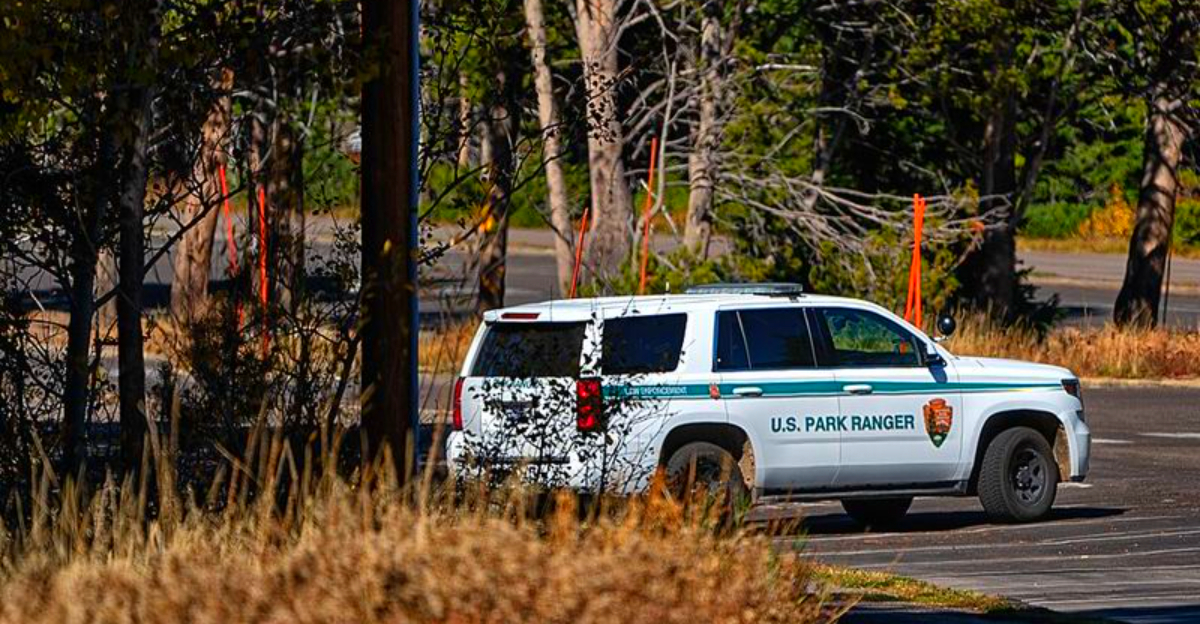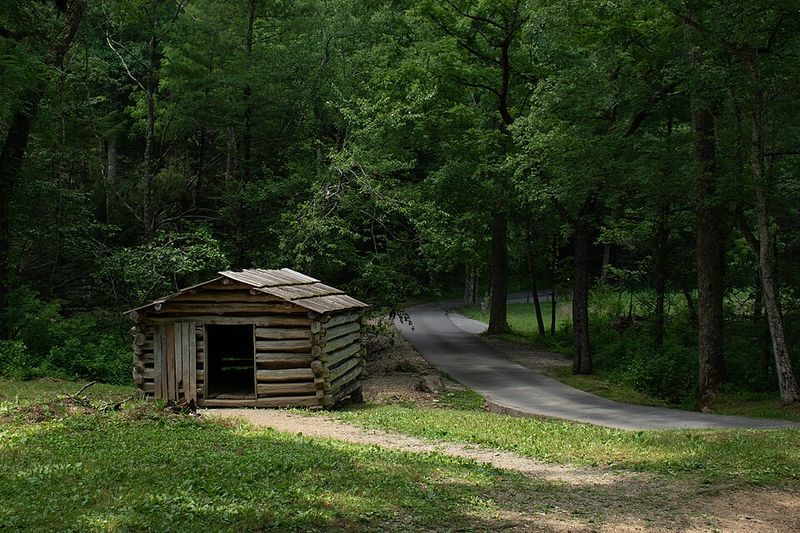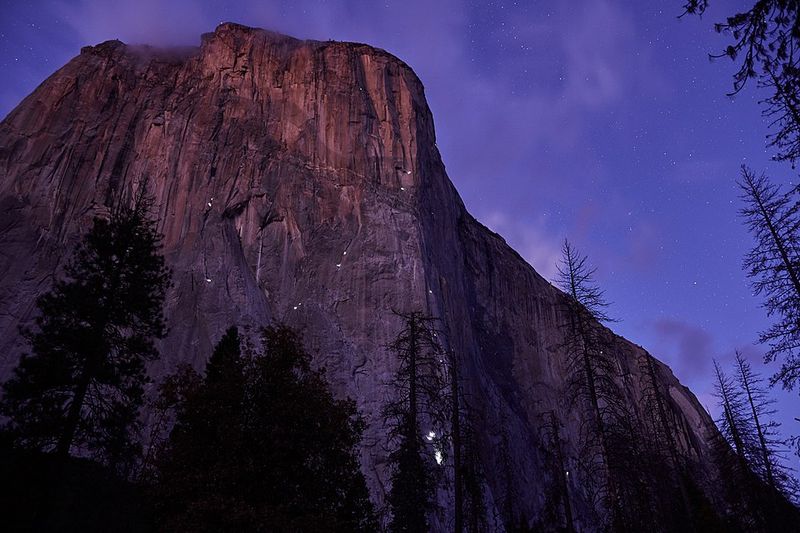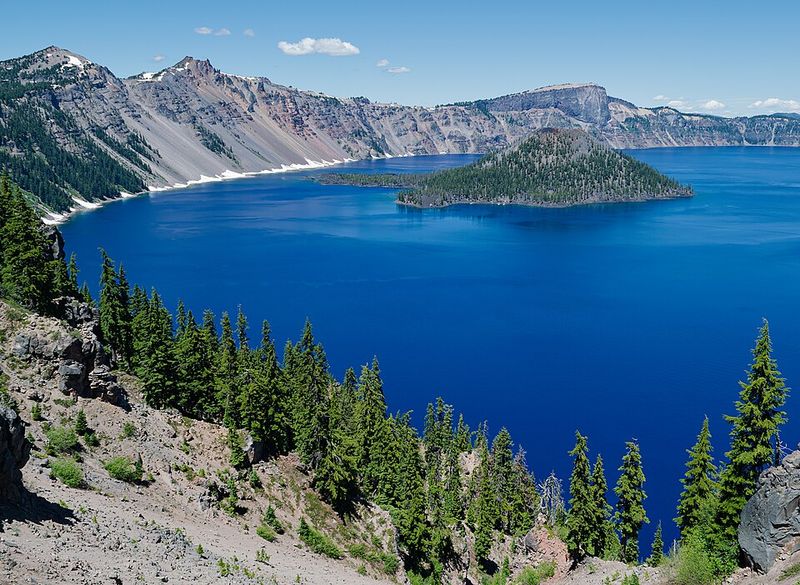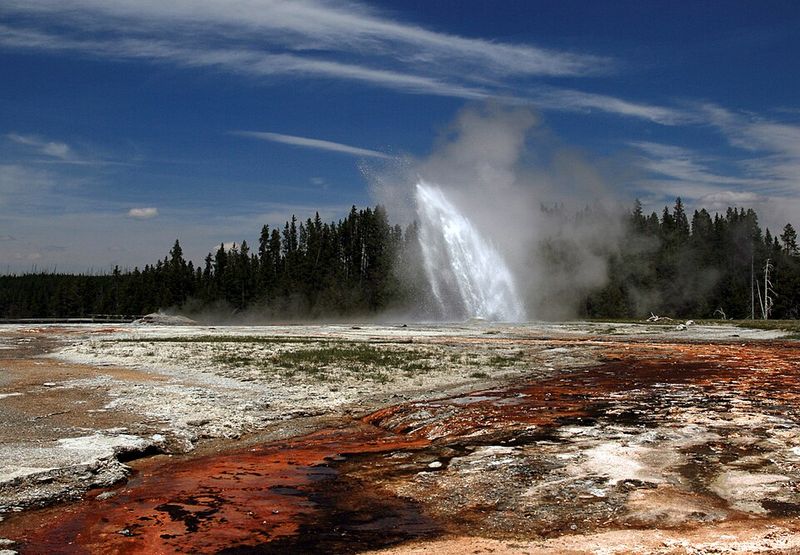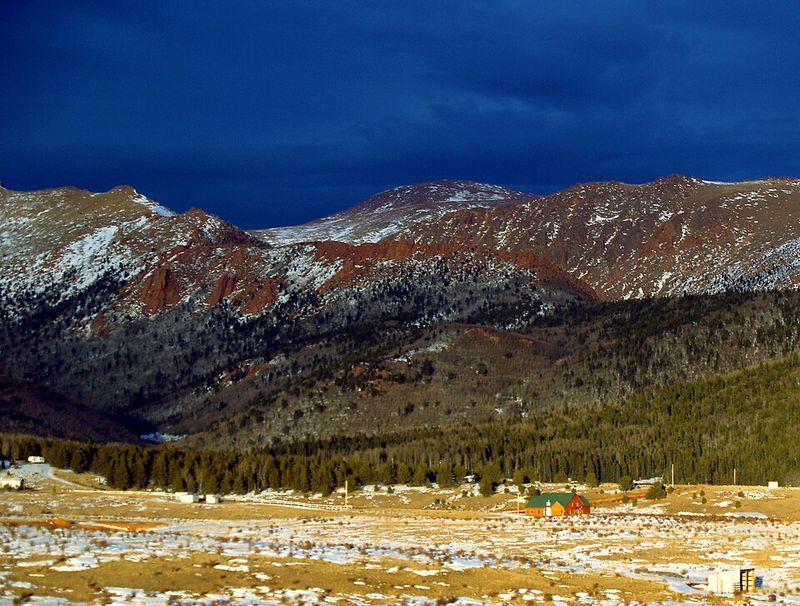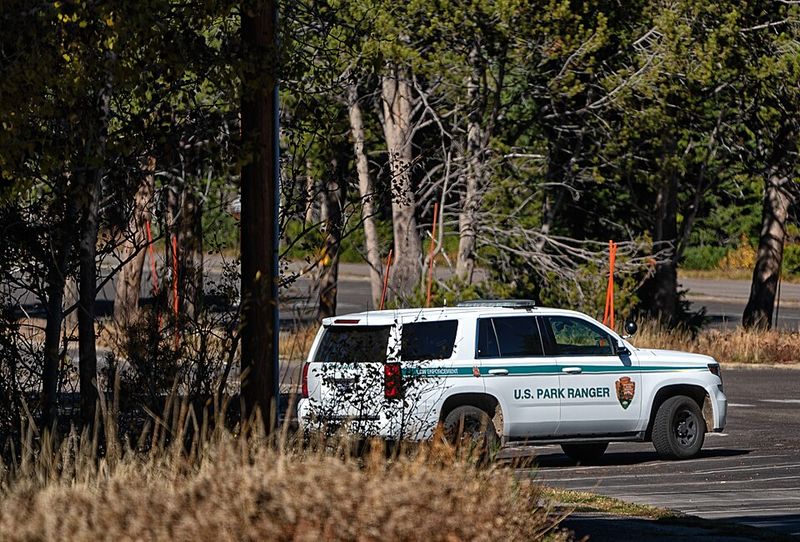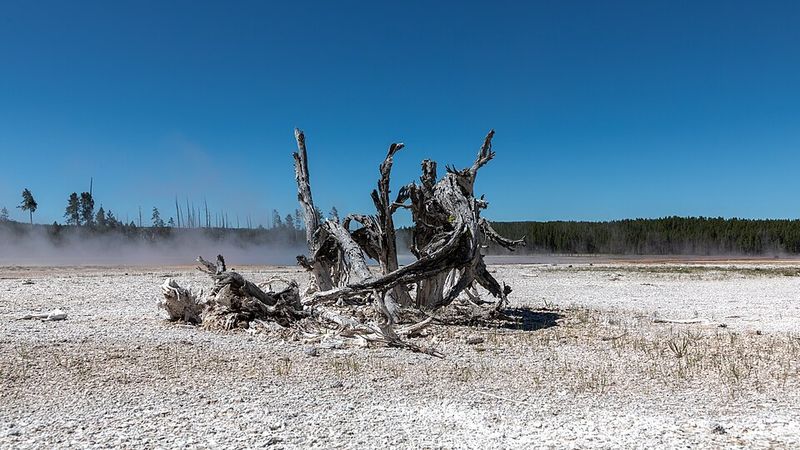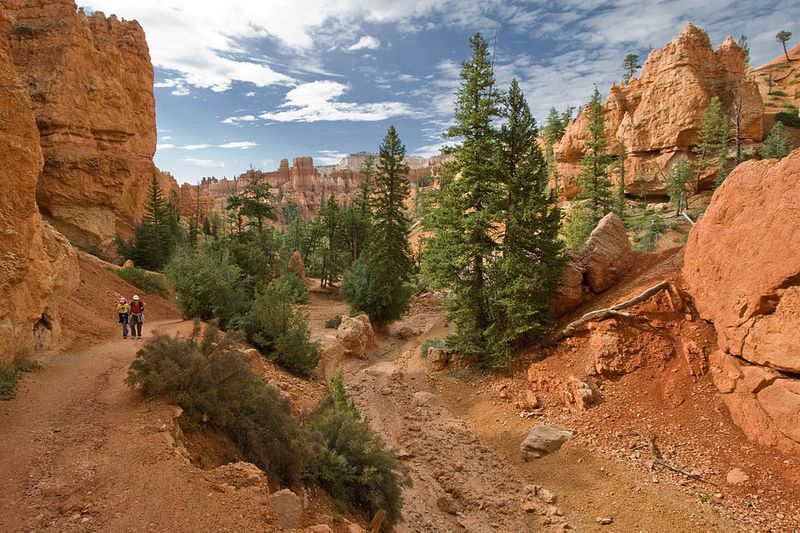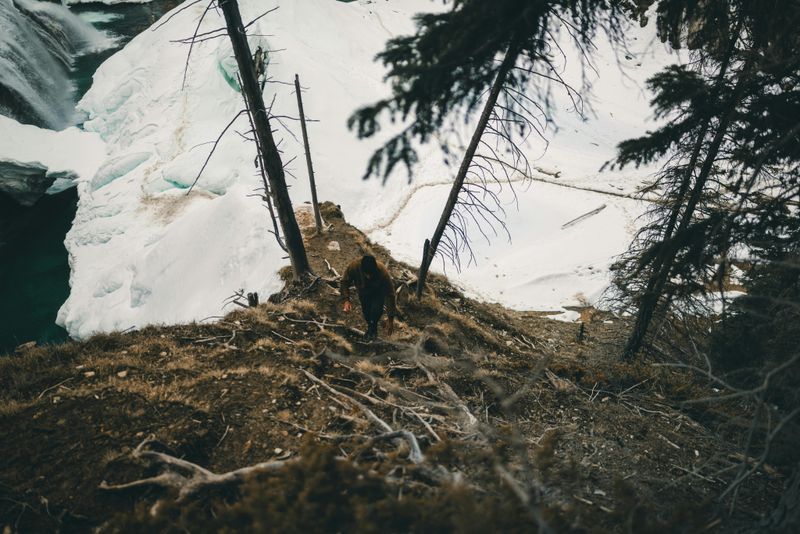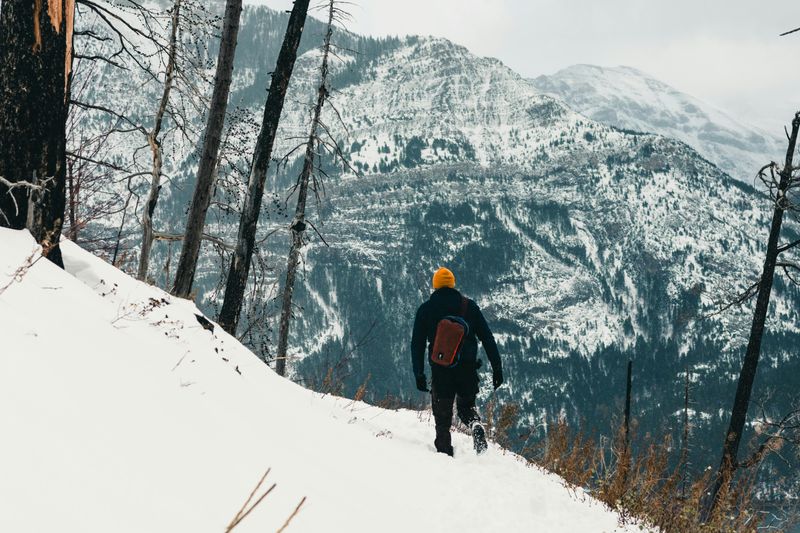Every year, millions of people explore America’s breathtaking national parks, seeking adventure and natural beauty. But amid the stunning landscapes, some visitors vanish without a trace – and many are never found. From unexplained disappearances to decades-old mysteries, these cases continue to baffle search teams and captivate the public, leaving families searching for answers that may never come.
1. The Smoky Mountains’ Most Famous Mystery: Dennis Martin
In June 1969, six-year-old Dennis Martin vanished while playing with his family during a Father’s Day outing in the Great Smoky Mountains National Park. One moment he was hiding behind trees with his brother and cousins, the next he was gone. Despite one of the largest search-and-rescue operations in National Park Service history – featuring thousands of volunteers, helicopters, and Green Berets – Dennis was never found.
To this day, no clues have been recovered, and the case remains open. Searchers combed through miles of rugged terrain, but the dense forest seemed to have swallowed him whole. The mystery has fueled decades of speculation, from animal attacks to abduction theories, yet none have been proven.
2. The Vanishing of Stacy Arras in Yosemite
Stacy Arras was just 14 years old when she stepped away from her father and their group in 1981 to take photos near Yosemite’s High Sierra Camps. She told her dad she’d be right back, but those were the last words he ever heard from her. Searchers found her camera lens cap but no other trace of the teenager.
The case remains one of Yosemite’s most enduring mysteries, a chilling reminder of how even short detours can turn dangerous in the wilderness. Her disappearance sparked extensive searches involving helicopters and tracking dogs. But the rugged Sierra Nevada terrain kept its secrets, and Stacy was never seen again.
3. Crater Lake: Beauty with a Dark Reputation
Oregon’s Crater Lake is famous for its stunning blue water – and for stories of strange disappearances. While not statistically higher than other parks, the site has a history of lost hikers and tragic incidents. Some locals whisper about hidden caves and spiritual legends tied to the lake, though official records point mainly to rugged terrain and harsh weather as key dangers.
The lake sits in the caldera of an ancient volcano, creating steep cliffs and unpredictable conditions. Winter storms can arrive suddenly, catching visitors off guard. Those who venture off marked trails risk getting lost in dense wilderness that surrounds the pristine waters, where help can be hours away.
4. Yellowstone’s Harsh Reality
Spanning nearly 3,500 square miles, Yellowstone National Park is as perilous as it is picturesque. From wildlife encounters with grizzly bears and bison to scalding geothermal features that can kill instantly, the park’s dangers are real and numerous. When people go missing here, recovery can be nearly impossible due to vast terrain, extreme weather, and isolated areas where search teams struggle to reach.
The park’s backcountry is so remote that some areas see no human visitors for years. Sudden snowstorms can occur even in summer months. Hidden crevasses, fast-moving rivers, and unstable ground near hot springs create hazards that can trap or injure unsuspecting hikers in seconds.
5. Joe Keller’s Disappearance in Colorado
In 2015, 19-year-old Joe Keller went for a jog near a Christian retreat in southern Colorado and never returned. An experienced runner and outdoorsman, Joe seemed an unlikely candidate for a tragic disappearance. A year later, his remains were discovered in rugged country miles away from the trailhead, far from where anyone expected.
Investigators believe he likely fell or suffered an accident, though the exact circumstances remain uncertain. His case highlights how quickly an ordinary outing can turn tragic, even for those with wilderness experience. The delay in finding him showed just how challenging searches become in Colorado’s vast mountainous terrain, where visibility is limited and weather changes rapidly.
6. The Missing 411 Phenomenon
Former police officer David Paulides created the Missing 411 project, compiling hundreds of unsolved disappearances in U.S. parks and wilderness areas. His research identifies curious patterns, such as clusters near granite formations and sudden weather changes during disappearances. While his work has drawn attention online and sparked countless theories, officials emphasize that most cases are likely due to natural causes – accidents, exposure, or disorientation – rather than anything supernatural.
Paulides’ books have sold thousands of copies and inspired documentaries. Critics argue his pattern-finding lacks scientific rigor, while supporters believe he’s uncovered something authorities have overlooked. Regardless of the debate, his work has brought renewed attention to missing persons cases.
7. Why So Many Cases Remain Unsolved
The National Park Service does not maintain a single, public database of all missing persons. Each park or region often handles cases locally, sometimes with state or federal help, but coordination between agencies can be inconsistent. This fragmented system makes it difficult to track how many people truly vanish in national parks each year.
Without centralized record-keeping, patterns are harder to identify and resources more difficult to allocate effectively. Some disappearances get classified under different categories – lost hikers, presumed accidents, or criminal investigations – creating further confusion. Advocacy groups have pushed for years to establish a comprehensive tracking system. Until that happens, the true scope of national park disappearances remains unclear, leaving families and researchers frustrated.
8. The Human Cost Behind the Mystery
For families, these disappearances are more than statistics—they’re ongoing heartbreaks that never truly heal. Parents, siblings, and children are left wondering what happened, clinging to hope while facing the likelihood they’ll never get answers. Advocacy groups such as Missing Persons of America and National Missing and Unidentified Persons System (NamUs) continue to push for greater transparency and coordination between agencies.
Some families spend years searching on their own, returning to parks repeatedly to look for clues. The emotional toll is immense, compounded by the frustration of dealing with bureaucratic obstacles. Many become advocates themselves, working to prevent other families from experiencing the same pain while demanding better search protocols and record-keeping.
9. The Most Common Explanations
While theories range from the paranormal to the improbable, investigators cite more grounded causes for most disappearances. Disorientation and exhaustion in vast terrain top the list, as people underestimate distances and overestimate their abilities. Sudden weather changes that make survival difficult can trap hikers who started their day under sunny skies.
Falls, wildlife encounters, and accidents in remote areas account for many tragedies. Limited cell service that delays rescue means help may arrive too late, if at all. Experts agree that nature itself – vast, unpredictable, and often unforgiving – is usually the true culprit. Human error, poor planning, and bad luck combine more often than any mysterious force to explain why people vanish.
10. Staying Safe in the Wild
If you plan to explore a national park, take precautions that could save your life. Tell someone your exact route and return time before heading out – this simple step helps searchers know where to look if something goes wrong. Carry a GPS tracker or satellite beacon, especially in areas without cell service.
Stay on marked trails and avoid solo hikes whenever possible. Check the weather forecast and pack for emergencies, including extra food, water, and warm clothing. Even day hikes can turn into overnight ordeals if you get lost or injured. The wilderness is breathtaking and offers unforgettable experiences, but it demands respect. Proper preparation makes the difference between a great adventure and becoming another unsolved mystery.
